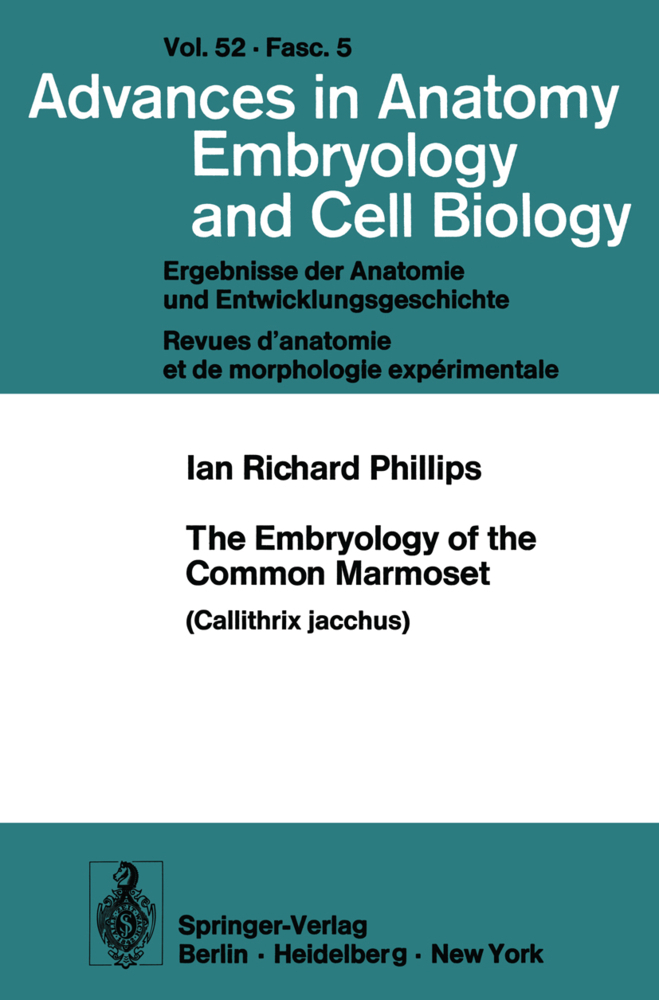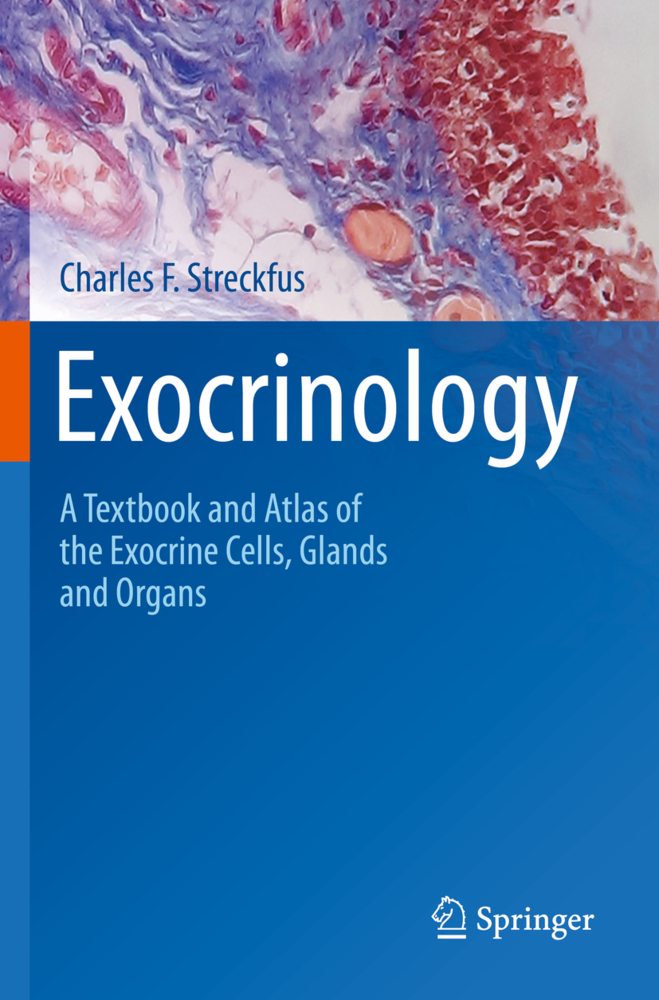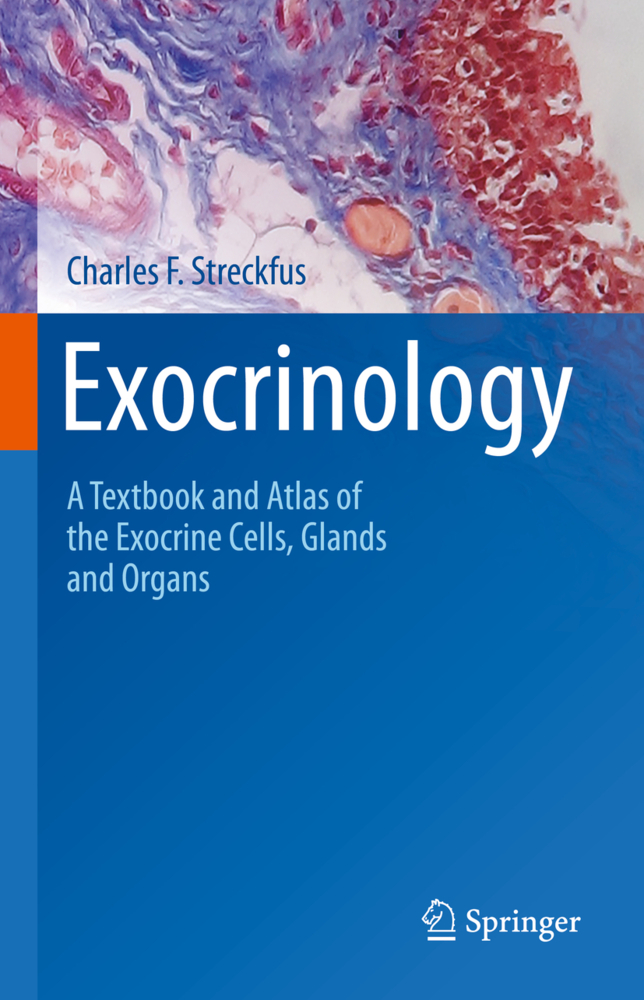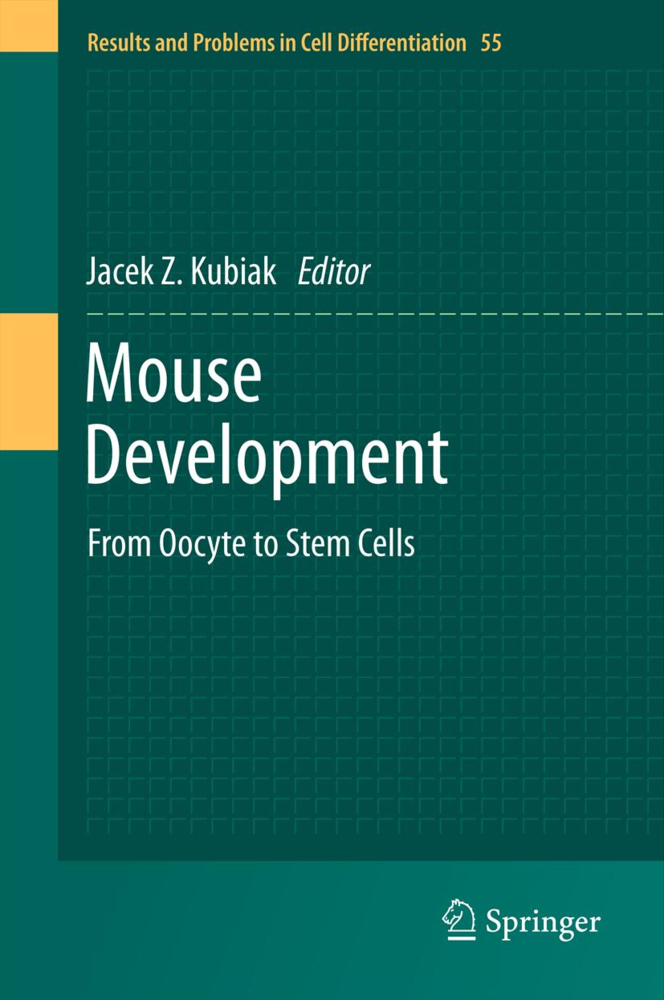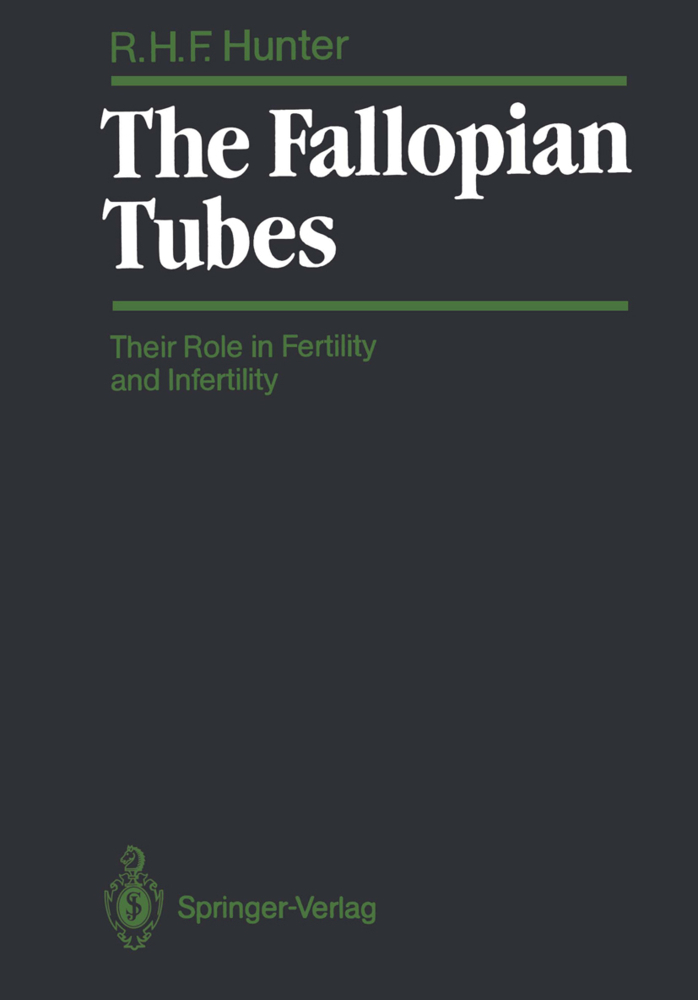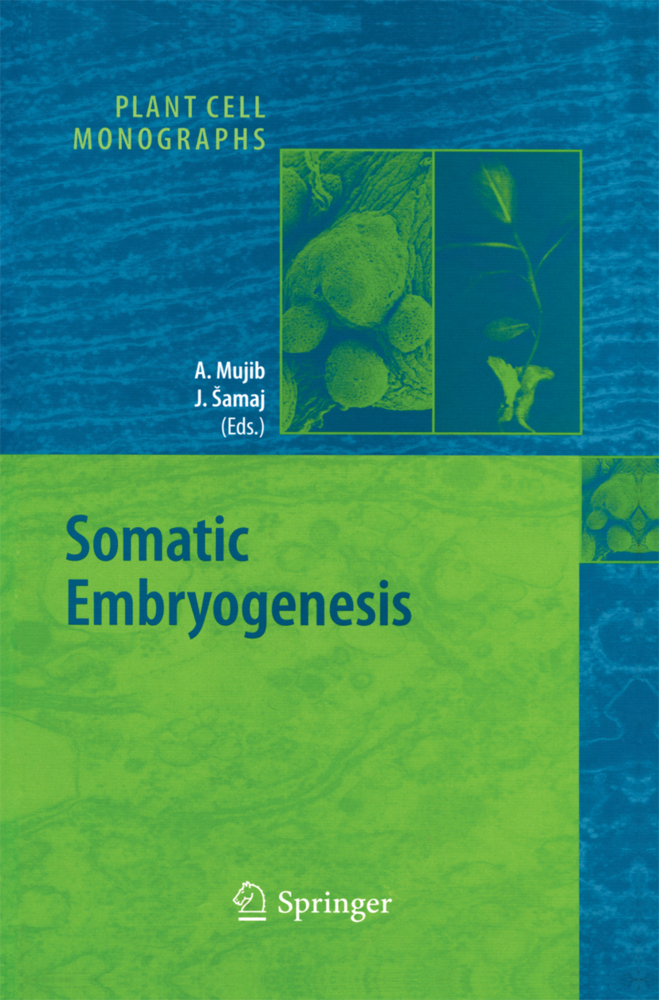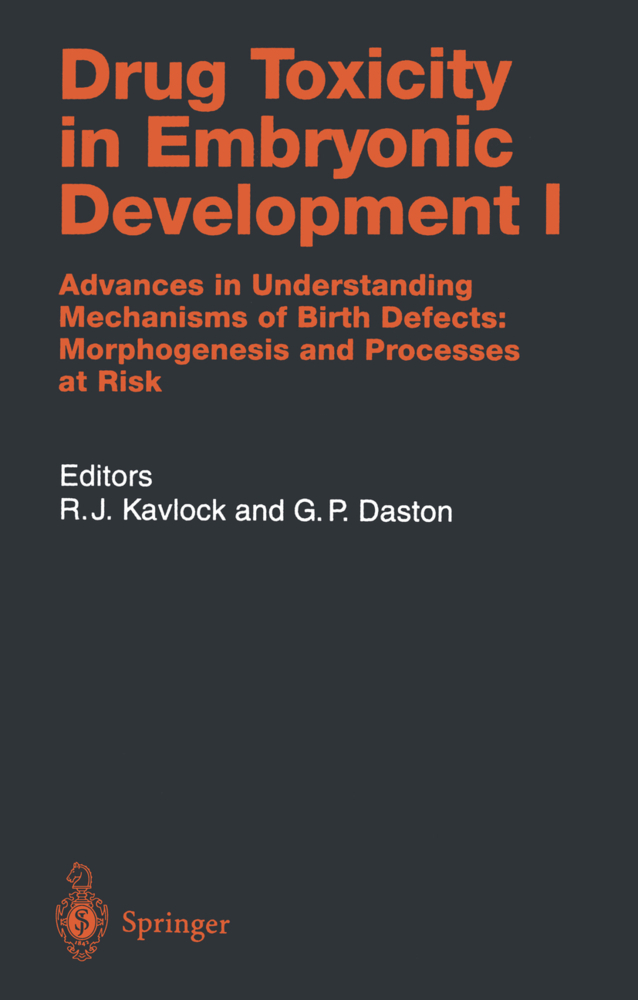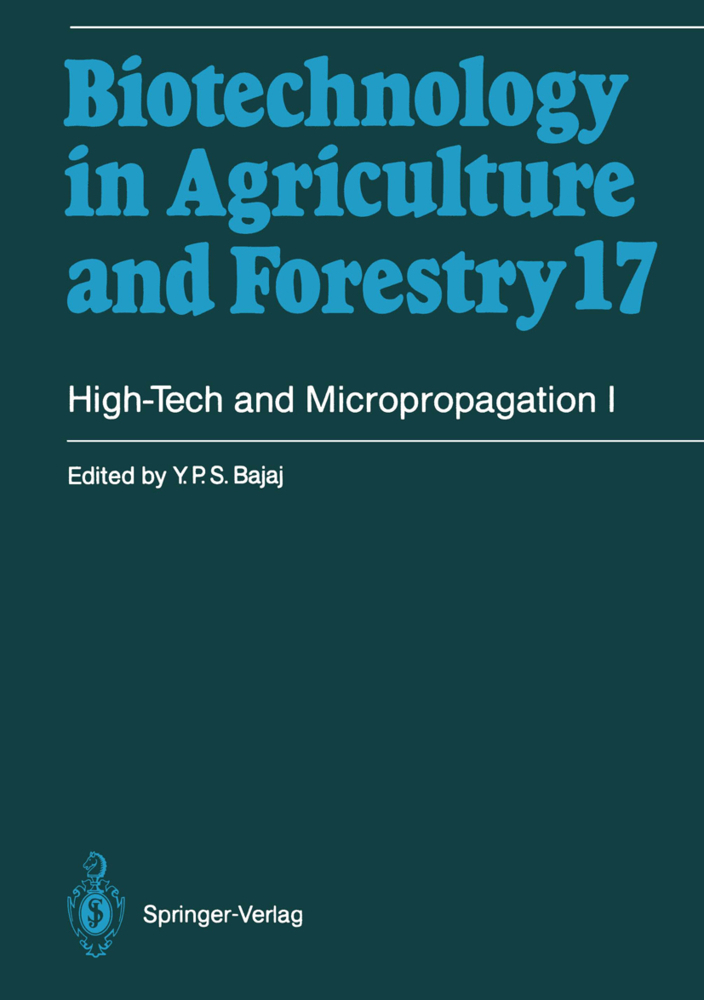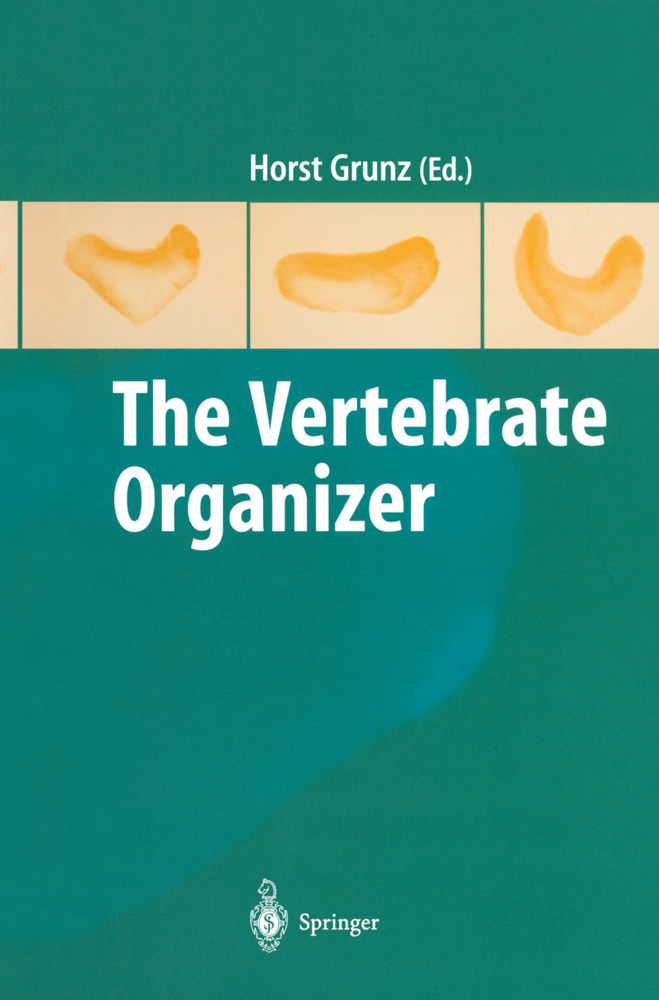Embryology of Angiosperms
Embryology of Angiosperms
Thirty-four years have elapsed since the publication of the late Professor P. Maheshwari's text, An Introduction to the Embryology of Angiosperms, a work which for many years served as an invaluable guide for students and a rich source book for research workerso Various texts dealing with sections of the braad spectrum oftopics encompassed by Maheshwari in his book have appeared in the interim, but a compendious modem work dealing with the whole field has been lacking. This present volume splendidly meets the need, and it is altogether fitting that Professor B. M. lohri, long an associate and close colleague of Professor Maheshwari and himself a prolific contributor to the subject, should have undertaken the task of editing it. When Maheshwari wrote, it was stiIl feasible for one author to handIe the subject, but today even someone with his fine bread th of vision and depth of understanding could not, alone, do it justice. So the effort has to be a collaborative one; and Professor lohri's achievement has been to bring together a team of authoritative collaborators, assign them their responsibilities, and put them to work to produce a text as integrated in its treatment as the diversity of the subject would allow. The product vividly illustrates the advances that have been made in the study of angiosperm reproductive systems in the last 30 years, and the book is surely destined to become the new standard for student and researcher alike.
1.2 Techniques to Study Embryology
1.3 Embryo Sacs in Anthers
1.3.1 Leptomeria
1.3.2 Calotis
1.3.3 Hyacinthus
1.4 Fritillaria Type of Embryo Sac
1.5 Unusual Embryological Features in Loranthaceae
1.5.1 Ovary-Ovule Complex
1.5.2 Embryo Sac
1.5.3 Endosperm
1.5.4 Embryo
1.5.5 Reproductive Calendar in Struthanthus vulgaris
1.6 Nutrition of the Ovule and Seed
1.6.1 Vascular Supply
1.6.2 Haustoria
1.6.3 Transfer Cells
1.7 Role of Persistent Pollen Tubes
1.8 Embryos of Doubtful Origin
1.8.1 Antipodal Embryos
1.8.2 Endospermal Embryos
1.9 Gymnospermous Characters in Angiosperms
1.9.1 Tambourissa
1.9.2 Butomopsis
1.9.3 Paeonia
1.10 Future Research
References
2 The Microsporangium
2.1 Introduction
2.2 Morphology and Structure
2.3 Ontogeny
2.4 Wall Layers
2.4.1 Epidermis
2.4.2 Endothecium
2.4.3 Middle Layers
2.4.4 Tapetum
2.5 Ubisch Bodies/Orbicules
2.5.1 Origin
2.5.2 Relation to Exine Deposition: By-Product
2.6 Tapetal Membrane: Structure, Origin, and Significance
2.7 Pollenkitt and Tryphine
2.8 Sporogenous Tissue: Ultrastructure
2.8.1 Cytoplasmic Membranes and Ribosome Population
2.8.2 Nucleus
2.8.3 Nucleolar Cycle
2.8.4 Cytoplasmic Organelles During Meiosis
2.8.5 Plasmodesmata and Cytoplasmic Connections
2.9 Initiation and Control of Meiosis
2.9.1 Duration of Meiosis
2.9.2 Synthesis of Callose: Deposition and Significance
2.9.3 Cytokinesis
2.9.4 Cellulosic Wall of Microspore Mother Cell
2.10 Some Unusual Features
2.11 Conclusions
References
3 The Ovule
3.1 Historical
3.2 Ovular Morphology
3.3 Ovule Initiation
3.4 Nucellus
3.5 Megasporogenesis
3.6 Integuments
3.7 Types of Ovules
3.8 Vascular Supply of the Ovule
3.9 Special Structures
3.10 Ovule Reduction
3.11 Concluding Remarks
References
4 The Female Gametophyte
4.1 Introduction
4.2 Types of Megagametophyte Development
4.3 Development of the Megagametophyte
4.3.1 The Megaspore
4.3.2 The Coenocytic Megagametophyte
4.4 The Relation with the Nucellar Tissue
4.5 Organization of the Embryo Sac
4.5.1 The Synergids
4.5.2 The Egg Cell
4.5.3 The Central Cell
4.5.4 The Antipodal Cells
4.6 Female Gametophyte Development
References
5 The Pollen Grain
5.1 Introduction
5.2 Pollen Structure and Cytochemistry
5.2.1 Pollen Shape
5.2.2 Pollen Cytology
5.2.3 Pollen-wall Structure
5.2.4 The Pollen Tube
5.2.5 Structural Adaptations of Pollen for Dispersal
5.3 Formation of Pollen
5.3.1 Cytology of Development
5.3.2 The Primexine
5.3.3 Establishment of Apertures
5.3.4 Exine Differentiation and Maturation
5.3.5 Intine Synthesis and Deposition
5.3.6 Mechanism of Cohesion in Composite Pollen
5.3.7 Pollen Sterility
5.4 Pollen Germination and Pistil Interactions
5.4.1 Pollen Quality
5.4.2 Pollen Germination and Tube Development
5.4.3 Diagnostic Landmarks of Pollination
5.4.4 Role of Pollen in Fertilization and Seed-setting
5.5 Pollen-wall Proteins and Allergens
5.6 Conclusions and Future Developments
References
6 Fertilization
6.1 Introduction
6.2 Stigma and Style
6.2.1 Function and Structure of the Stigma
6.2.2 The Nature of the Stigma Covering
6.2.3 Function and Structure of the Style
6.3 Pollen Germination
6.3.1 Sticking and Hydration
6.3.2 Pollen Tube Formation and Growth
6.3.3 The Sperm Cell
6.4 Pollen-Pistil Interaction
6.4.1 Pollen Recognition, Acceptance, and Rejection
6.4.2 Pollen Incompatibility
6.4.3 Entry of Pollen Tube into Stigma and Style
6.4.4 Pollination Effects
6.5 Entrance and Discharge in Embryo Sac
6.5.1 Course of the Pollen Tube
6.5.2 Entry into the Embryo Sac
6.5.3 Growth Through the Filiform Apparatus
6.5.4 Entry into the Synergid
6.5.5 Transfer of Tube Content
6.6 Fusion of Gametes
6.6.1 Fusion of Nuclei
6.7 The Progamic Phase and Fertilization
References
7 The Endosperm
7.1 Introduction
7.2 Nuclear Endosperm
7.2.1 Wall Formation
7.2.2 Cucurbitaceae
7.2.3 Leguminosae
7.2.4 Palmae
7.2.5 Proteaceae
7.2.6 Histochemistry and Ultrastructure
7.3 Cellular Endosperm
7.3.1 Acanthaceae
7.3.2 Cyrillaceae
7.3.3 Gesneriaceae
7.3.4 Icacinaceae
7.3.5 Santalaceae
7.3.6 Loasaceae
7.3.7 Loranthaceae
7.3.8 Scrophulariaceae
7.3.9 Histochemistry and Ultrastructure
7.4 Helobial Endosperm
7.4.1 Salient Features in Monocotyledons
7.4.2 Histochemistry and Ultrastructure
7.5 Ruminate Endosperm
7.6 Central Cell
7.6.1 Central Cell Cytoplasm
7.6.2 Central Cell Nucleus
7.6.3 Covering of the Central Cell
7.7 Wall Formation in Endosperm
7.8 Cytology of the Endosperm
7.9 Reserve Materials in Developing Endosperm
7.9.1 Protein Bodies
7.9.2 Starch
7.10 Embryo-Endosperm Relationship
7.11 Incorporation of Nucellus and Integument in Endosperm Formation
7.12 Conclusions and Prospects
References
8 The Embryo
8.1 Historical
8.2 Zygote
8.2.1 Structure and Composition
8.2.2 Size Adjustments
8.2.3 Polarity
8.3 Early Embryogenesis
8.3.1 Cell Patterns
8.3.2 Tetrad, Quadrant, and Octant Proembryos
8.3.3 Stages Leading to Mature Embryo
8.4 Classification Based on Early Development of the Embryo
8.4.1 Systems Suggested by Schnarf and Johansen
8.4.2 System Suggested by Souèges
8.4.3 Other Systems ofClassification
8.5 Differentiation in Embryo
8.6 Dicot and Monocot Embryo
8.7 The Grass Embryo
8.8 The Embryo in Palms
8.9 Ultrastructural and Cytochemical Aspects
8.10 Suspensor: Structure and Function
8.11 Deviations from Usual Development
8.11.1 Embryogeny in Paeonia
8.11.2 Embryos Devoid of Organs
8.11.3 Chimeral Embryos
8.12 Concluding Remarks
References
9 Polyembryony
9.1 Introduction
9.2 Classification
9.2.1 Simple Polyembryony
9.2.2 Multiple Polyembryony
9.3 Nucellar Polyembryony
9.3.1 Rutaceae
9.3.2 Anacardiaceae
9.3.3 Myrtaceae
9.3.4 Cactaceae
9.3.5 Orchidaceae
9.4 Integumentary Polyembryony
9.4.1 Endothelial Polyembryony
9.5 Zygotic and Suspensor Polyembryony
9.5.1 Zygotic Polyembryony
9.5.2 Suspensor Polyembryony
9.6 Synergid Polyembryony
9.6.1 Twins and Triplets
9.7 Polyembryony in Hybrids
9.8 Causes of Polyembryony
9.9 Induction of Polyembryony
9.10 Utilization of Plural Embryos
References
10 Gametophytic Apomixis
10.1 Introduction
10.1.1 Definitions
10.1.2 Synonyms
10.1.3 Remarks on Terminology
10.2 Embryology of Gametophytic Apomicts
10.2.1 Development of Unreduced Embryo Sacs
10.2.2 Formation of Endosperm and Embryo
10.2.3 Male Meiosis and the Male Gametophyte
10.3 Apomixis and Sexuality
10.3.1 Sexual Potentials in Gametophytic Apomicts
10.3.2 Possibilities of Influencing the Degree of Apomixis
10.4 Causes and Consequences of Apomixis
10.4.1 Heterozygosity and Variability
10.4.2 Causes of Gametophytic Apomixis; Components of Apomixis in Sexual Plants
10.4.3 Apomixis and Polyploidy
10.4.4 Agamic Species Complexes and Their Evolution
10.5 Genetics of Gametophytic Apomixis
10.5.1 Dominant or Recessive Inheritance?
10.5.2 Some Critical Remarks
10.5.3 Some Results, Conclusions, and Prospects
10.6 Apomixis and Breeding Conclusions
References
11 Role of Polyploidy in Reproductive Organs and Tissues
11.1 Introduction
11.2 Methods of Polyploidization and Ploidy Determination
11.2.1 Acytokinetic Mitosis (AM)
11.2.2 Spindle Fusion (SF)
11.2.3 Restitutional Mitosis (RM)
11.2.4 Endomitosis (Em)
11.2.5 Chromosome Endoreduplication (Er)
11.2.6 Ploidy Determination
11.3 Anther
11.3.1 Anther Wall and Connective
11.3.2 Tapetum
11.3.3 Pollen Grains
11.4 Ovule
11.4.1 Nucellus
11.4.2 Integument(s) and Endothelium
11.5 Embryo Sac
11.5.1 Egg Cell
11.5.2 Synergids
11.5.3 Proendospermic Cell
11.5.4 Antipodal Cells
11.6 Endosperm
11.6.1 Origin and Types of Endosperm
11.6.2 Polyploidy in the Endosperm
11.7 Embryo
11.7.1 Embryo Proper
11.7.2 Suspensor
11.7.3 Nonzygotic Embryos
11.8 Physiological Role of Polyploidy
11.9 Future Research
References
12 The Seed: Structure
12.1 Introduction
12.1.1 Importance of Seeds
12.1.2 Historical Survey
12.2 Structure of Seeds
12.2.1 General Morphology
12.2.2 Vascular Supply of the Seed
12.2.3 Seed Types
12.2.4 Development and Structure of Seed-coats
12.2.5 Differentiation
12.2.6 The Seed-coat Surface
12.2.7 Stomata in Seed-coats
12.3 Special Structures, Adaptations, and Functions
12.3.1 Sarcotestal Seeds
12.3.2 Arillate Seeds
12.3.3 Jaculator
12.3.4 Winged Seeds
12.3.5 Haired Seeds
12.3.6 Dust and Balloon Seeds
12.3.7 Hydrochoric Seeds
12.3.8 Mucilage Seeds
12.3.9 Active Dispersal of Seeds (Autochoric Seeds)
12.3.10 Color of Seeds
12.4 Adaptations to Germination
12.4.1 Opercula
12.4.2 Imbibition Lids
12.4.3 Epistase and Hypostase
12.5 Rumination and Labyrinth Seeds
12.5.1 Labyrinth Seeds
12.6 Storage Tissue
12.7 Concluding Remarks
References
13 The Seed: Germination
13.1 Introduction
13.2 General Considerations
13.2.1 Internal Morphology
13.2.2 Composition of Seeds and Reserve Foods
13.3 Germination: Structural, Compositional, and Physiological Changes
13.3.1 Dicotyledons
13.3.2 Monocotyledons
13.4 Storage and Aging of Seeds: Structure and Physiology
References
14 Embryology and Taxonomy
14.1 Introduction
14.2 Embryological Features of Taxonomic Importance
14.3 Applications of Embryology to Problems of Family Relationships
14.3.1 Podostemaceae
14.3.2 Basellaceae
14.3.3 Stachyuraceae
14.3.4 Frankeniaceae
14.3.5 Tropaeolaceae
14.3.6 Salvadoraceae
14.3.7 Centrolepidaceae
14.4 Applications of Embryology to Problems of Taxonomic Structure Within Families
14.4.1 Aizoaceae
14.4.2 Vacciniaceae
14.4.3 Zannichellia
14.5 Applications of Embryology to Problems of Generic Affinity and Assignment
14.5.1 Ploiarium
14.5.2 Filicium
14.5.3 Nyctanthes-Jasminum
14.5.4 Ophiopogon
14.5.5 Kyllinga
14.5.6 Burmannia pusilla
14.6 Contributions of Embryology to Taxonomic Problems Still Unsolved
14.6.1 Erythroxylaceae-Linaceae
14.6.2 Theligonaceae
14.6.3 Blandfordia
14.6.4 Philydraceae
14.6.5 Eriocaulaceae
14.7 Confirmation or Alteration of Earlier Conclusions
14.7.1 Cactaceae
14.7.2 Garryaceae
14.7.3 Orobanchaceae
14.7.4 Pentaphragma
14.8 Embryology in Relation to Taxonomy - the Prospect
14.8.1 Cornus
14.8.2 Glycine and Phaseolus
14.8.3 Eustachys petraea and E. glauca
References
15 Homologies and Phylogeny
15.1 Introduction
15.1.1 Sexuality and Overall Phylogeny
15.2 Microsporangia
15.2.1 Microsporangium Wall
15.2.2 Microsporangium Content
15.2.3Microsporangium Number and Position
15.3 Megasporangia
15.3.1 General Structure
15.4 Ontogeny of Nucellus
15.4.1 Tapetum/Endothelium
15.4.2 Megasporangium Content
15.4.3 A Proposed Macroevolution of Meiosporic Structures
15.5 Male Gametophyte
15.5.1 Extrinsic to Angiosperms
15.5.2 Intrinsic to Angiosperms
15.6 Female Gametophyte
15.6.1 Female Sexual Structures in Chlorophyta Extrinsic to Angiosperms
15.6.2 Embryo Sac
15.6.3 Diversity in Embryo Sacs
15.6.4 Ontogeny of Embryo Sac as Compared to Female Gametophyte of Taxus
15.7 Pollen Reception by Female Organ
15.7.1 Fertilization
15.7.2 Double Fertilization, Extrinsic to Angiosperms
15.7.3 Intrinsic to Angiosperms
15.7.4 Cytology of Zygote Formation
15.8 Embryogenesis
15.8.1 Albuminogenesis (or Endosperm Formation) in Angiosperms
15.8.2 Embryo
15.9 Seed
15.9.1 Time Relations in the Development of Seed
15.9.2 Diversity in Seed Structure
15.10 Concluding Remarks
15.10.1 Questions Raised by Natural Diversities
15.10.2 Questions Raised by Suggested Experiments
References
16 Experimental Embryology
16.1 Introduction
16.2 The Problems: Role of Experimental Embryology
16.3 Techniques of Cell, Tissue, and Organ Culture
16.4 Floral Organs and Buds
16.4.1 In Vivo Studies
16.4.2 In Vitro Studies
16.5 Anther and Pollen Culture
16.5.1 Cultural Procedure and Nutritional Requirements
16.5.2 Anther Culture
16.5.3 Pollen Culture
16.5.4 The Pollen Plants
16.5.5 Use of Haploids
16.6 Ovary, Ovule, and Nucellus Culture
16.6.1 Ovary Culture
16.6.2 Ovule Culture
16.6.3 Nucellus Culture
16.7 Control of Fertilization
16.7.1 Intra-ovarian Pollination and Fertilization
16.7.2 In Vitro Pollination of Ovules and Fertilization
16.7.3 Inter- and Intrageneric Hybrids
16.8 Endosperm Culture
16.8.1 Immature Endosperm
16.8.2 Mature Endosperm
16.8.3 Embryo-Endosperm Relationship
16.8.4 Organogenesis in Endosperm Cultures
16.9 Embryo Culture
16.10 Polyembryony
16.11 Control of Embryogenesis
16.11.1 Loss of Embryogenic Potency
16.11.2 Ontogeny of Embryos
16.12 Protoplast Culture
16.12.1 Embryogenesis and Regeneration
16.12.2 Protoplast Fusion and Somatic Hybridization
16.12.3 "Pomatoes" and "Topatoes"
16.13 Concluding Remarks
References
Plant Index.
1 Embryology: Then and Now
1.1 Introduction1.2 Techniques to Study Embryology
1.3 Embryo Sacs in Anthers
1.3.1 Leptomeria
1.3.2 Calotis
1.3.3 Hyacinthus
1.4 Fritillaria Type of Embryo Sac
1.5 Unusual Embryological Features in Loranthaceae
1.5.1 Ovary-Ovule Complex
1.5.2 Embryo Sac
1.5.3 Endosperm
1.5.4 Embryo
1.5.5 Reproductive Calendar in Struthanthus vulgaris
1.6 Nutrition of the Ovule and Seed
1.6.1 Vascular Supply
1.6.2 Haustoria
1.6.3 Transfer Cells
1.7 Role of Persistent Pollen Tubes
1.8 Embryos of Doubtful Origin
1.8.1 Antipodal Embryos
1.8.2 Endospermal Embryos
1.9 Gymnospermous Characters in Angiosperms
1.9.1 Tambourissa
1.9.2 Butomopsis
1.9.3 Paeonia
1.10 Future Research
References
2 The Microsporangium
2.1 Introduction
2.2 Morphology and Structure
2.3 Ontogeny
2.4 Wall Layers
2.4.1 Epidermis
2.4.2 Endothecium
2.4.3 Middle Layers
2.4.4 Tapetum
2.5 Ubisch Bodies/Orbicules
2.5.1 Origin
2.5.2 Relation to Exine Deposition: By-Product
2.6 Tapetal Membrane: Structure, Origin, and Significance
2.7 Pollenkitt and Tryphine
2.8 Sporogenous Tissue: Ultrastructure
2.8.1 Cytoplasmic Membranes and Ribosome Population
2.8.2 Nucleus
2.8.3 Nucleolar Cycle
2.8.4 Cytoplasmic Organelles During Meiosis
2.8.5 Plasmodesmata and Cytoplasmic Connections
2.9 Initiation and Control of Meiosis
2.9.1 Duration of Meiosis
2.9.2 Synthesis of Callose: Deposition and Significance
2.9.3 Cytokinesis
2.9.4 Cellulosic Wall of Microspore Mother Cell
2.10 Some Unusual Features
2.11 Conclusions
References
3 The Ovule
3.1 Historical
3.2 Ovular Morphology
3.3 Ovule Initiation
3.4 Nucellus
3.5 Megasporogenesis
3.6 Integuments
3.7 Types of Ovules
3.8 Vascular Supply of the Ovule
3.9 Special Structures
3.10 Ovule Reduction
3.11 Concluding Remarks
References
4 The Female Gametophyte
4.1 Introduction
4.2 Types of Megagametophyte Development
4.3 Development of the Megagametophyte
4.3.1 The Megaspore
4.3.2 The Coenocytic Megagametophyte
4.4 The Relation with the Nucellar Tissue
4.5 Organization of the Embryo Sac
4.5.1 The Synergids
4.5.2 The Egg Cell
4.5.3 The Central Cell
4.5.4 The Antipodal Cells
4.6 Female Gametophyte Development
References
5 The Pollen Grain
5.1 Introduction
5.2 Pollen Structure and Cytochemistry
5.2.1 Pollen Shape
5.2.2 Pollen Cytology
5.2.3 Pollen-wall Structure
5.2.4 The Pollen Tube
5.2.5 Structural Adaptations of Pollen for Dispersal
5.3 Formation of Pollen
5.3.1 Cytology of Development
5.3.2 The Primexine
5.3.3 Establishment of Apertures
5.3.4 Exine Differentiation and Maturation
5.3.5 Intine Synthesis and Deposition
5.3.6 Mechanism of Cohesion in Composite Pollen
5.3.7 Pollen Sterility
5.4 Pollen Germination and Pistil Interactions
5.4.1 Pollen Quality
5.4.2 Pollen Germination and Tube Development
5.4.3 Diagnostic Landmarks of Pollination
5.4.4 Role of Pollen in Fertilization and Seed-setting
5.5 Pollen-wall Proteins and Allergens
5.6 Conclusions and Future Developments
References
6 Fertilization
6.1 Introduction
6.2 Stigma and Style
6.2.1 Function and Structure of the Stigma
6.2.2 The Nature of the Stigma Covering
6.2.3 Function and Structure of the Style
6.3 Pollen Germination
6.3.1 Sticking and Hydration
6.3.2 Pollen Tube Formation and Growth
6.3.3 The Sperm Cell
6.4 Pollen-Pistil Interaction
6.4.1 Pollen Recognition, Acceptance, and Rejection
6.4.2 Pollen Incompatibility
6.4.3 Entry of Pollen Tube into Stigma and Style
6.4.4 Pollination Effects
6.5 Entrance and Discharge in Embryo Sac
6.5.1 Course of the Pollen Tube
6.5.2 Entry into the Embryo Sac
6.5.3 Growth Through the Filiform Apparatus
6.5.4 Entry into the Synergid
6.5.5 Transfer of Tube Content
6.6 Fusion of Gametes
6.6.1 Fusion of Nuclei
6.7 The Progamic Phase and Fertilization
References
7 The Endosperm
7.1 Introduction
7.2 Nuclear Endosperm
7.2.1 Wall Formation
7.2.2 Cucurbitaceae
7.2.3 Leguminosae
7.2.4 Palmae
7.2.5 Proteaceae
7.2.6 Histochemistry and Ultrastructure
7.3 Cellular Endosperm
7.3.1 Acanthaceae
7.3.2 Cyrillaceae
7.3.3 Gesneriaceae
7.3.4 Icacinaceae
7.3.5 Santalaceae
7.3.6 Loasaceae
7.3.7 Loranthaceae
7.3.8 Scrophulariaceae
7.3.9 Histochemistry and Ultrastructure
7.4 Helobial Endosperm
7.4.1 Salient Features in Monocotyledons
7.4.2 Histochemistry and Ultrastructure
7.5 Ruminate Endosperm
7.6 Central Cell
7.6.1 Central Cell Cytoplasm
7.6.2 Central Cell Nucleus
7.6.3 Covering of the Central Cell
7.7 Wall Formation in Endosperm
7.8 Cytology of the Endosperm
7.9 Reserve Materials in Developing Endosperm
7.9.1 Protein Bodies
7.9.2 Starch
7.10 Embryo-Endosperm Relationship
7.11 Incorporation of Nucellus and Integument in Endosperm Formation
7.12 Conclusions and Prospects
References
8 The Embryo
8.1 Historical
8.2 Zygote
8.2.1 Structure and Composition
8.2.2 Size Adjustments
8.2.3 Polarity
8.3 Early Embryogenesis
8.3.1 Cell Patterns
8.3.2 Tetrad, Quadrant, and Octant Proembryos
8.3.3 Stages Leading to Mature Embryo
8.4 Classification Based on Early Development of the Embryo
8.4.1 Systems Suggested by Schnarf and Johansen
8.4.2 System Suggested by Souèges
8.4.3 Other Systems ofClassification
8.5 Differentiation in Embryo
8.6 Dicot and Monocot Embryo
8.7 The Grass Embryo
8.8 The Embryo in Palms
8.9 Ultrastructural and Cytochemical Aspects
8.10 Suspensor: Structure and Function
8.11 Deviations from Usual Development
8.11.1 Embryogeny in Paeonia
8.11.2 Embryos Devoid of Organs
8.11.3 Chimeral Embryos
8.12 Concluding Remarks
References
9 Polyembryony
9.1 Introduction
9.2 Classification
9.2.1 Simple Polyembryony
9.2.2 Multiple Polyembryony
9.3 Nucellar Polyembryony
9.3.1 Rutaceae
9.3.2 Anacardiaceae
9.3.3 Myrtaceae
9.3.4 Cactaceae
9.3.5 Orchidaceae
9.4 Integumentary Polyembryony
9.4.1 Endothelial Polyembryony
9.5 Zygotic and Suspensor Polyembryony
9.5.1 Zygotic Polyembryony
9.5.2 Suspensor Polyembryony
9.6 Synergid Polyembryony
9.6.1 Twins and Triplets
9.7 Polyembryony in Hybrids
9.8 Causes of Polyembryony
9.9 Induction of Polyembryony
9.10 Utilization of Plural Embryos
References
10 Gametophytic Apomixis
10.1 Introduction
10.1.1 Definitions
10.1.2 Synonyms
10.1.3 Remarks on Terminology
10.2 Embryology of Gametophytic Apomicts
10.2.1 Development of Unreduced Embryo Sacs
10.2.2 Formation of Endosperm and Embryo
10.2.3 Male Meiosis and the Male Gametophyte
10.3 Apomixis and Sexuality
10.3.1 Sexual Potentials in Gametophytic Apomicts
10.3.2 Possibilities of Influencing the Degree of Apomixis
10.4 Causes and Consequences of Apomixis
10.4.1 Heterozygosity and Variability
10.4.2 Causes of Gametophytic Apomixis; Components of Apomixis in Sexual Plants
10.4.3 Apomixis and Polyploidy
10.4.4 Agamic Species Complexes and Their Evolution
10.5 Genetics of Gametophytic Apomixis
10.5.1 Dominant or Recessive Inheritance?
10.5.2 Some Critical Remarks
10.5.3 Some Results, Conclusions, and Prospects
10.6 Apomixis and Breeding Conclusions
References
11 Role of Polyploidy in Reproductive Organs and Tissues
11.1 Introduction
11.2 Methods of Polyploidization and Ploidy Determination
11.2.1 Acytokinetic Mitosis (AM)
11.2.2 Spindle Fusion (SF)
11.2.3 Restitutional Mitosis (RM)
11.2.4 Endomitosis (Em)
11.2.5 Chromosome Endoreduplication (Er)
11.2.6 Ploidy Determination
11.3 Anther
11.3.1 Anther Wall and Connective
11.3.2 Tapetum
11.3.3 Pollen Grains
11.4 Ovule
11.4.1 Nucellus
11.4.2 Integument(s) and Endothelium
11.5 Embryo Sac
11.5.1 Egg Cell
11.5.2 Synergids
11.5.3 Proendospermic Cell
11.5.4 Antipodal Cells
11.6 Endosperm
11.6.1 Origin and Types of Endosperm
11.6.2 Polyploidy in the Endosperm
11.7 Embryo
11.7.1 Embryo Proper
11.7.2 Suspensor
11.7.3 Nonzygotic Embryos
11.8 Physiological Role of Polyploidy
11.9 Future Research
References
12 The Seed: Structure
12.1 Introduction
12.1.1 Importance of Seeds
12.1.2 Historical Survey
12.2 Structure of Seeds
12.2.1 General Morphology
12.2.2 Vascular Supply of the Seed
12.2.3 Seed Types
12.2.4 Development and Structure of Seed-coats
12.2.5 Differentiation
12.2.6 The Seed-coat Surface
12.2.7 Stomata in Seed-coats
12.3 Special Structures, Adaptations, and Functions
12.3.1 Sarcotestal Seeds
12.3.2 Arillate Seeds
12.3.3 Jaculator
12.3.4 Winged Seeds
12.3.5 Haired Seeds
12.3.6 Dust and Balloon Seeds
12.3.7 Hydrochoric Seeds
12.3.8 Mucilage Seeds
12.3.9 Active Dispersal of Seeds (Autochoric Seeds)
12.3.10 Color of Seeds
12.4 Adaptations to Germination
12.4.1 Opercula
12.4.2 Imbibition Lids
12.4.3 Epistase and Hypostase
12.5 Rumination and Labyrinth Seeds
12.5.1 Labyrinth Seeds
12.6 Storage Tissue
12.7 Concluding Remarks
References
13 The Seed: Germination
13.1 Introduction
13.2 General Considerations
13.2.1 Internal Morphology
13.2.2 Composition of Seeds and Reserve Foods
13.3 Germination: Structural, Compositional, and Physiological Changes
13.3.1 Dicotyledons
13.3.2 Monocotyledons
13.4 Storage and Aging of Seeds: Structure and Physiology
References
14 Embryology and Taxonomy
14.1 Introduction
14.2 Embryological Features of Taxonomic Importance
14.3 Applications of Embryology to Problems of Family Relationships
14.3.1 Podostemaceae
14.3.2 Basellaceae
14.3.3 Stachyuraceae
14.3.4 Frankeniaceae
14.3.5 Tropaeolaceae
14.3.6 Salvadoraceae
14.3.7 Centrolepidaceae
14.4 Applications of Embryology to Problems of Taxonomic Structure Within Families
14.4.1 Aizoaceae
14.4.2 Vacciniaceae
14.4.3 Zannichellia
14.5 Applications of Embryology to Problems of Generic Affinity and Assignment
14.5.1 Ploiarium
14.5.2 Filicium
14.5.3 Nyctanthes-Jasminum
14.5.4 Ophiopogon
14.5.5 Kyllinga
14.5.6 Burmannia pusilla
14.6 Contributions of Embryology to Taxonomic Problems Still Unsolved
14.6.1 Erythroxylaceae-Linaceae
14.6.2 Theligonaceae
14.6.3 Blandfordia
14.6.4 Philydraceae
14.6.5 Eriocaulaceae
14.7 Confirmation or Alteration of Earlier Conclusions
14.7.1 Cactaceae
14.7.2 Garryaceae
14.7.3 Orobanchaceae
14.7.4 Pentaphragma
14.8 Embryology in Relation to Taxonomy - the Prospect
14.8.1 Cornus
14.8.2 Glycine and Phaseolus
14.8.3 Eustachys petraea and E. glauca
References
15 Homologies and Phylogeny
15.1 Introduction
15.1.1 Sexuality and Overall Phylogeny
15.2 Microsporangia
15.2.1 Microsporangium Wall
15.2.2 Microsporangium Content
15.2.3Microsporangium Number and Position
15.3 Megasporangia
15.3.1 General Structure
15.4 Ontogeny of Nucellus
15.4.1 Tapetum/Endothelium
15.4.2 Megasporangium Content
15.4.3 A Proposed Macroevolution of Meiosporic Structures
15.5 Male Gametophyte
15.5.1 Extrinsic to Angiosperms
15.5.2 Intrinsic to Angiosperms
15.6 Female Gametophyte
15.6.1 Female Sexual Structures in Chlorophyta Extrinsic to Angiosperms
15.6.2 Embryo Sac
15.6.3 Diversity in Embryo Sacs
15.6.4 Ontogeny of Embryo Sac as Compared to Female Gametophyte of Taxus
15.7 Pollen Reception by Female Organ
15.7.1 Fertilization
15.7.2 Double Fertilization, Extrinsic to Angiosperms
15.7.3 Intrinsic to Angiosperms
15.7.4 Cytology of Zygote Formation
15.8 Embryogenesis
15.8.1 Albuminogenesis (or Endosperm Formation) in Angiosperms
15.8.2 Embryo
15.9 Seed
15.9.1 Time Relations in the Development of Seed
15.9.2 Diversity in Seed Structure
15.10 Concluding Remarks
15.10.1 Questions Raised by Natural Diversities
15.10.2 Questions Raised by Suggested Experiments
References
16 Experimental Embryology
16.1 Introduction
16.2 The Problems: Role of Experimental Embryology
16.3 Techniques of Cell, Tissue, and Organ Culture
16.4 Floral Organs and Buds
16.4.1 In Vivo Studies
16.4.2 In Vitro Studies
16.5 Anther and Pollen Culture
16.5.1 Cultural Procedure and Nutritional Requirements
16.5.2 Anther Culture
16.5.3 Pollen Culture
16.5.4 The Pollen Plants
16.5.5 Use of Haploids
16.6 Ovary, Ovule, and Nucellus Culture
16.6.1 Ovary Culture
16.6.2 Ovule Culture
16.6.3 Nucellus Culture
16.7 Control of Fertilization
16.7.1 Intra-ovarian Pollination and Fertilization
16.7.2 In Vitro Pollination of Ovules and Fertilization
16.7.3 Inter- and Intrageneric Hybrids
16.8 Endosperm Culture
16.8.1 Immature Endosperm
16.8.2 Mature Endosperm
16.8.3 Embryo-Endosperm Relationship
16.8.4 Organogenesis in Endosperm Cultures
16.9 Embryo Culture
16.10 Polyembryony
16.11 Control of Embryogenesis
16.11.1 Loss of Embryogenic Potency
16.11.2 Ontogeny of Embryos
16.12 Protoplast Culture
16.12.1 Embryogenesis and Regeneration
16.12.2 Protoplast Fusion and Somatic Hybridization
16.12.3 "Pomatoes" and "Topatoes"
16.13 Concluding Remarks
References
Plant Index.
Johri, B. M.
| ISBN | 978-3-642-69304-5 |
|---|---|
| Medientyp | Buch |
| Copyrightjahr | 2011 |
| Verlag | Springer, Berlin |
| Umfang | XXVI, 834 Seiten |
| Sprache | Englisch |



